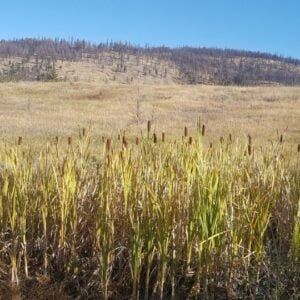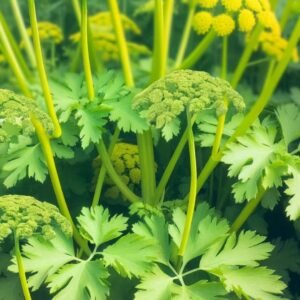American Groundnuts, also known by their scientific name Apios americana and commonly referred to as potato beans, are a remarkable perennial indigenous to North America. They are also know as Hopniss and Indian Groundnut. This vine is known for its historical significance as a crucial food source for many Native American tribes and early European settlers, spanning a range from Northeastern Canada to Florida, and westward to Texas and the Dakotas.
This perennial vine comes from the pea family produces both edible tubers and beans and can be planted with potatoes in the spring time. Harvest in late summer and replant the smallest tubers for next years harvest.
This climbing vine can reach up to 10 feet in length and features compound leaves with five to seven leaflets. It bears small, brownish-purple flowers that bloom in dense clusters.
The plant produces edible tubers that grow in a string-like formation, resembling beads. These tubers, typically small, can be larger in selectively bred varieties and have a nutty flavour akin to potatoes.
Thriving in moist, well-drained soils, American groundnuts are commonly found along woodland edges, near streams, or other damp environments, and prefer partial to full sun exposure.
Known for its hardiness, the vine requires minimal care once established and can be propagated from tubers or seeds, with tuber propagation being more efficient.
Rich in proteins, carbohydrates, essential amino acids, and dietary fiber, the tubers provide substantial nutritional benefits.
These tubers are best used in cooked forms such as boiled, roasted, or included in soups and stews to avoid indigestibility when raw.
Valued for their storability and nutritional content, these tubers were an integral part of the diet for early settlers.
As a native species, American groundnuts play a significant role in local ecosystems by providing food for wildlife and enhancing soil health through their nitrogen-fixing capabilities.
The vine is known for its highly fragrant, burgundy flowers with cream edges, belonging to the legume family. These edible blooms add aesthetic value and a touch of curiosity to gardens.
To enhance their sweetness, it is best to harvest the tubers after the plant has experienced a few hard frosts. Tubers can be stored for months in a cool, dry place like a root cellar.
Potato Beans are not only interesting for their cultivation but also for their culinary uses. Firstly, it’s worth noting that they are rich in protein and carbohydrates, making them a nutritious addition to any diet. They also provide essential amino acids and dietary fiber, which are beneficial for overall health.
The tubers of the American groundnut are known for their nutty flavour, similar to that of potatoes but with a slightly sweeter and richer taste. Before cooking, the tubers should be thoroughly washed. It’s important to cook these tubers thoroughly, as they can be hard to digest when raw due to their complex starches.
Boiling: One of the simplest ways to prepare groundnut tubers is by boiling them. This can soften them and make them a great base for mashes or to be mixed into stews.
Roasting: Roasting groundnut tubers can enhance their flavour, giving them a crispy exterior and a soft, flavourful interior. They can be roasted whole or sliced, with a bit of oil and seasoning.
Pan-frying: Sliced groundnut tubers can be pan-fried, much like home fries. They can be served as a side dish with eggs or mixed into savory breakfast hashes.
In Soups and Stews: Their nutty flavour makes them an excellent addition to soups and stews. They can be used as a thickening agent and will add a rich flavour to the broth.
Recipes
Groundnut Soup: In this recipe, groundnut tubers are boiled until soft, then blended into a creamy soup base. This can be flavoured with onions, garlic, and herbs for additional depth.
Groundnut Roast: Similar to a potato roast, the tubers can be cut into chunks, tossed with olive oil, herbs, and spices, and roasted in the oven until they are golden brown.
Groundnut Salad: Cooked, cooled, and sliced groundnut tubers can be added to salads. They pair well with leafy greens, vinaigrette, and other roasted vegetables.
Traditional Uses
Historically, Native Americans used American groundnuts as a staple in their diet. They would often cook them in stews with other vegetables and meats, or dry and grind them into a flour that could be used in various recipes.
These tubers are available directly from Garden Faerie Botanicals in the heart of British Columbia, Canada. The collection features heirloom and heritage seeds that are personally cultivated organically without the use of any chemicals. Emphasizing historical, rare, non-GMO seeds, this selection preserves biodiversity through open-pollination.







Reviews
There are no reviews yet.